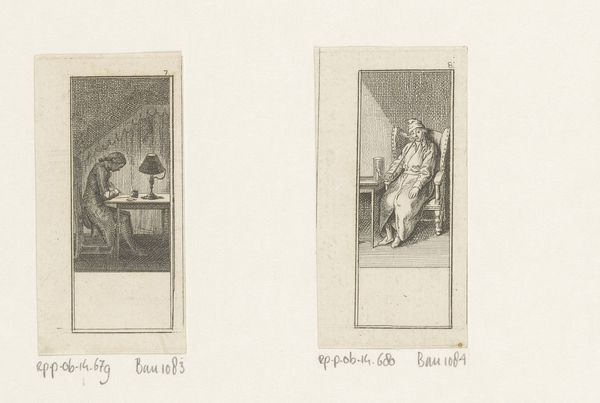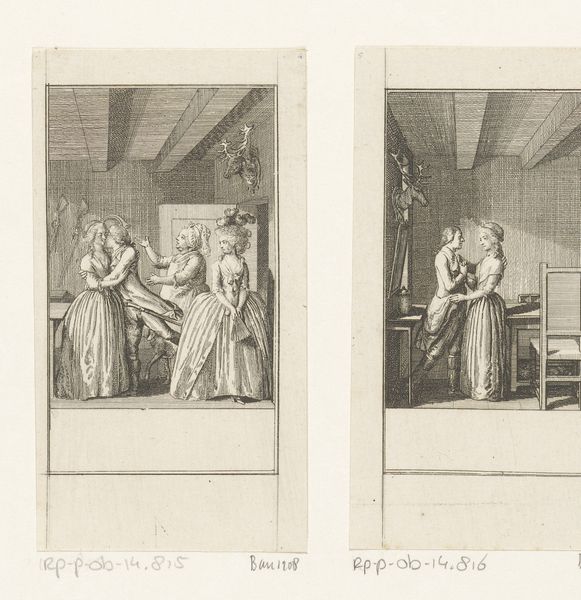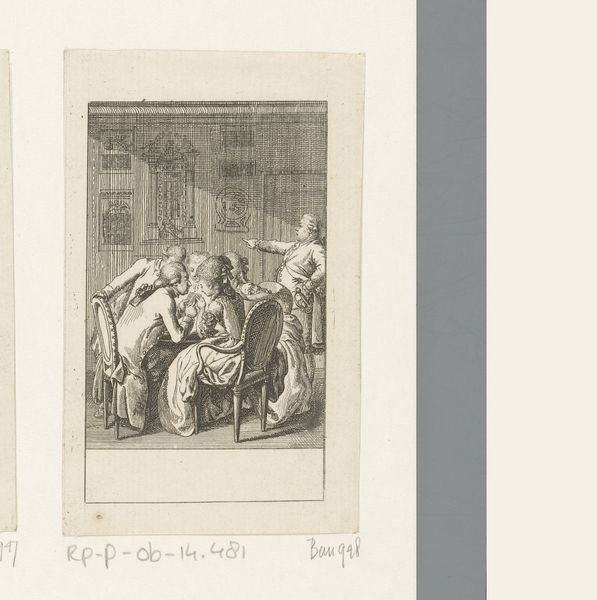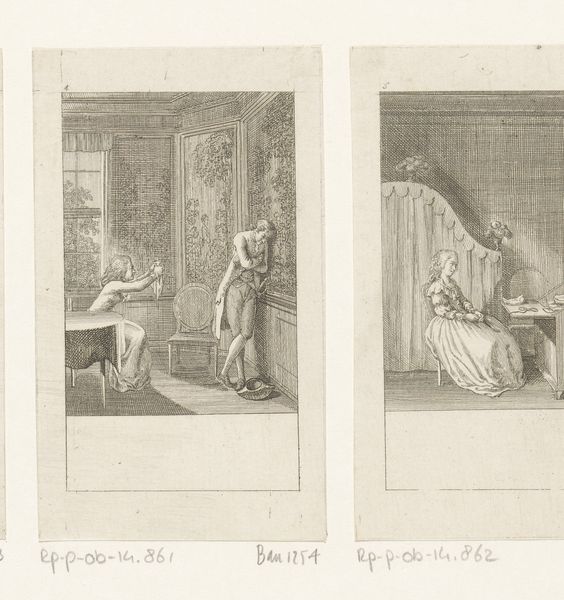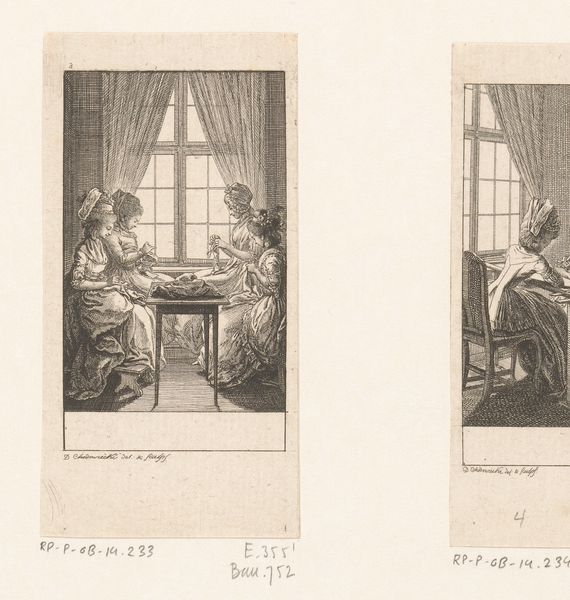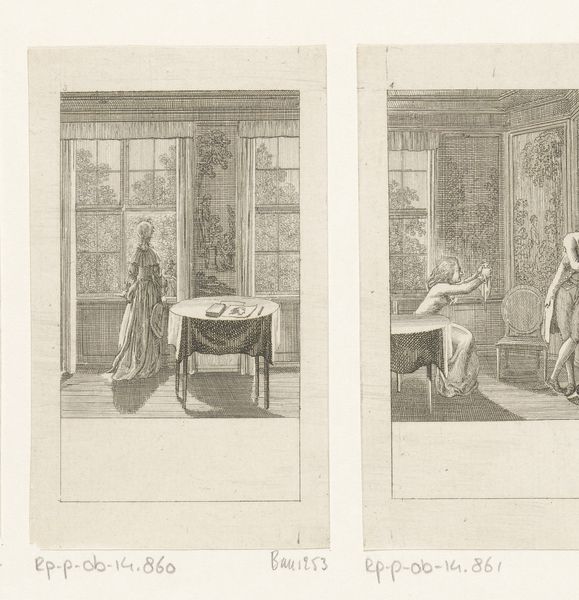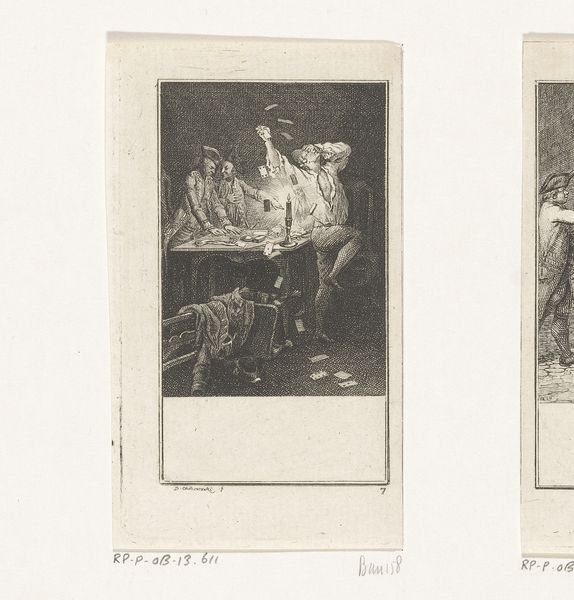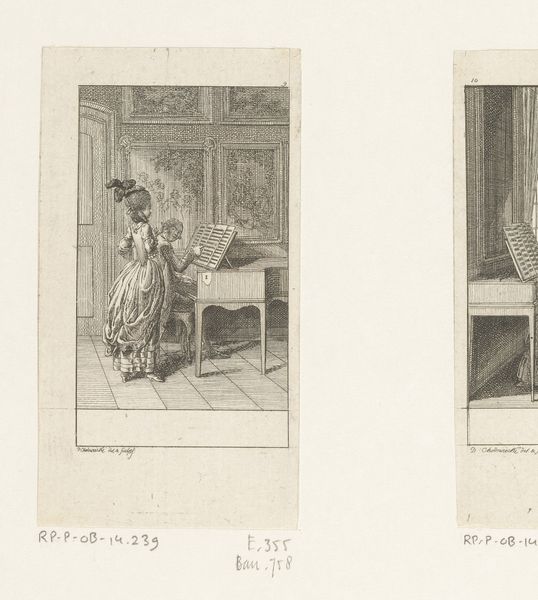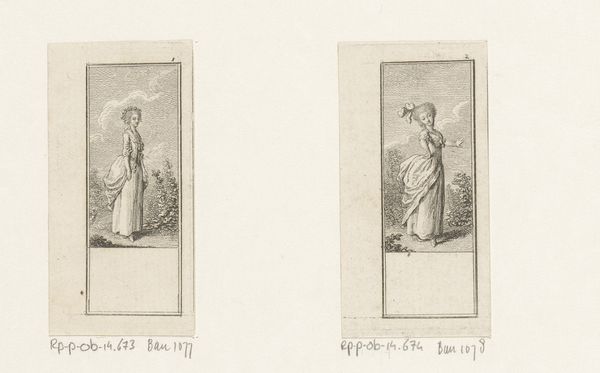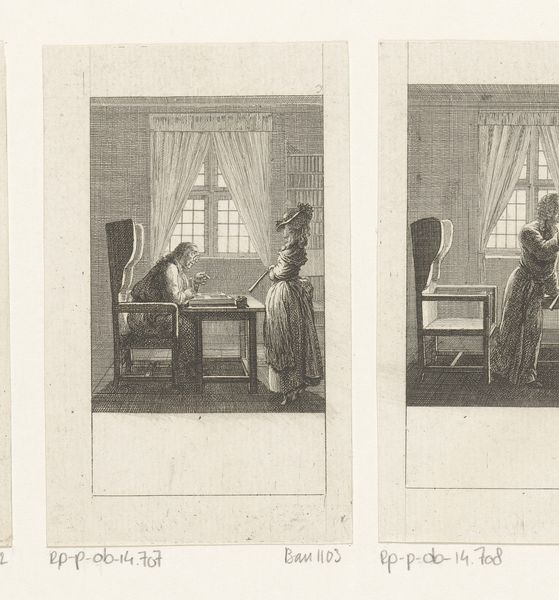
Dimensions: height 60 mm, width 30 mm
Copyright: Rijks Museum: Open Domain
Editor: We’re looking at "Brutaalheid," a 1784 etching by Daniel Nikolaus Chodowiecki. It seems to show two different vignettes of women, one outdoors and one indoors. The scenes seem disconnected but linked in terms of femininity during the rococo era. What are your thoughts when you view it? Curator: Chodowiecki provides commentary on societal roles and expectations of women during the late 18th century. The print would have circulated widely, accessible to a growing middle class keen on understanding social mores. It's crucial to ask: who was the audience for prints like these, and what kind of social messages did they convey? Editor: So you’re suggesting it’s not just a depiction of women, but a commentary on their positions in society? Curator: Precisely. Notice the contrasting scenes – one woman enjoys a brisk walk outside, perhaps reflecting the aristocratic privilege of leisure, while the other is confined indoors, engaged in domestic needlework. Does the contrast seem stark? And what values are being promoted in relation to these women? Editor: Absolutely! The outdoors looks unrestricted, whereas the indoor scene feels enclosed, more claustrophobic almost. What might he be saying about women's options, or lack thereof, through this opposition? Curator: One possibility is that it reinforces societal expectations around appropriate feminine behavior: public versus private life, indulgence versus industry. Consider, too, the power dynamics inherent in representing these women for public consumption, it really makes you think who the consumer for this artwork was. Editor: I see! It makes the image much richer to think about the social forces at play at the time. I appreciate how you shed light on the hidden social cues of "Brutaalheid".
Comments
No comments
Be the first to comment and join the conversation on the ultimate creative platform.
